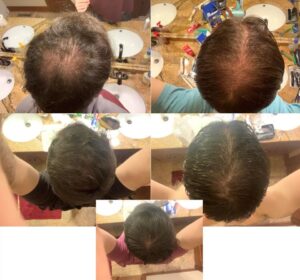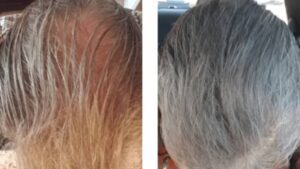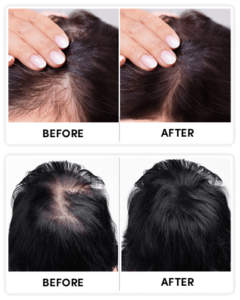HAIR LOSS PROBLEM: The Latest Advances in Hair Restoration Technology

Getting to Know the Hair Loss Dilemma
Hair loss is something that millions around the globe grapple with, cutting across all ages, genders, and ethnicities. There's a lot of buzz around it, often clouded with myths and stigma. But grasping the basics is your first step towards finding a fix. Whether you’re noticing a slow thinning or an abrupt loss, it can hit hard, affecting both your personal and work life. Dive into this blog as we explore the latest in hair restoration tech, offering insights and hope for those on the hunt for solutions.
Digging Into the Causes of Hair Loss
Hair loss, also known as alopecia in the medical world, can be triggered by a mix of factors like genetics, hormonal shifts, medical conditions, and even stress. Many folks find their hair woes tied to hereditary reasons, often called androgenetic alopecia. Other culprits might include autoimmune issues, nutritional gaps, or lifestyle choices. Pinpointing the cause is key to figuring out the best treatment game plan.
The Emotional Toll of Losing Hair
Dealing with hair loss can be emotionally draining, taking a toll on your self-esteem and confidence. It's not rare to feel like you're grieving a part of your identity. The societal push to keep up a youthful look only adds fuel to the fire, which is why tackling both the physical and emotional sides of hair loss is so important.
Busting Common Hair Loss Myths
There's no shortage of tall tales when it comes to hair loss—from thinking hats cause baldness to the myth that frequent shampooing does more harm than good. It's vital to separate fact from fiction and zero in on what's backed by evidence. Knowing what really impacts hair health can ease unnecessary worries and lead you to effective treatments.
Traditional Takes on Tackling Hair Loss
Over-the-Counter Options
When it comes to old-school hair loss remedies, over-the-counter treatments like minoxidil are popular. Available in forms like foams and solutions, minoxidil is known for spurring hair growth and slowing down balding. These products can be a hit for some, but they need consistent use and patience, often taking months to show noticeable changes.
Prescription Picks
If you're looking for something stronger, prescription meds like finasteride might be the way to go. This medication works to curb hair loss by blocking the hormone that shrinks hair follicles. However, it's important to chat with a healthcare pro about possible side effects and to ensure it’s suitable for you.
Why The Ancient Samurai Warriors Never Lost Their Hair…

guaranteed to work for any men or women out there...
Watch nowSwitching Up Your Lifestyle and Home Fixes
Better eating habits, stress reduction, and a healthier lifestyle can also help manage hair loss. Home remedies like scalp massages, essential oils, and dietary supplements can boost hair health. While they might not reverse hair loss, they can work nicely alongside other treatments for better overall results.
Cutting-Edge Hair Restoration Technology
Follicular Unit Extraction (FUE)
Follicular Unit Extraction (FUE) is one of the latest leaps in hair restoration. This minimally invasive technique involves taking individual hair follicles and transplanting them to thinning areas. FUE delivers natural-looking results with minimal scarring, making it a top pick for those after a permanent fix.
Low-Level Laser Therapy (LLLT)
Low-Level Laser Therapy (LLLT) is a non-invasive option using laser light to encourage hair growth. By boosting blood flow and sparking follicle activity, LLLT can effectively tackle hair thinning. It's a go-to for both men and women and can be done at home with special laser caps or combs.
Platelet-Rich Plasma (PRP) Therapy
Platelet-Rich Plasma (PRP) Therapy taps into the body’s natural healing powers to promote hair growth. By injecting a concentration of platelets into the scalp, PRP stimulates follicle regeneration and enhances hair thickness. This state-of-the-art treatment is gaining traction for its promising outcomes and minimal side effects.
Innovative Hair Transplant Techniques
Robotic Hair Transplant Systems
Technology has reshaped hair transplants with the arrival of robotic systems. These high-tech machines boost precision and efficiency in hair grafting, ensuring consistent and natural results. Robotic hair transplants cut down on human error, making the whole process smoother and more reliable for patients.
NeoGraft Technology
NeoGraft technology takes FUE up a notch by automating both the extraction and implantation process. This system speeds up procedures and improves accuracy, giving patients a more comfortable experience with less downtime. NeoGraft’s trailblazing approach is setting new benchmarks in hair restoration.
Top Trichologist: Do This To Your Scalp To Regrow A Full Head Of Hair

Completely natural and dirt cheap way that makes it possible for you to finally regrow all your hair back.
Watch nowStem Cell Hair Restoration
Stem cell therapy is opening up a new frontier in hair restoration. By leveraging the regenerative abilities of stem cells, this technique aims to awaken dormant follicles and encourage fresh growth. Though still in its early days, stem cell hair restoration shows tremendous promise for those seeking a long-term answer.
Non-Invasive Ways to Combat Hair Loss
Scalp Micropigmentation
Scalp micropigmentation provides a cosmetic fix to hair loss by mimicking the look of hair follicles. This method involves applying natural pigments to the scalp, creating the illusion of a fuller head of hair. Perfect for those not ready for surgery, it offers immediate results with minimal upkeep.
Hair Cloning and Regeneration
Research in hair cloning and regeneration is paving the way for groundbreaking treatments. Scientists are exploring ways to clone hair follicles and regenerate lost hair, offering hope for a lasting cure. While still in the works, these advancements promise thrilling possibilities for future hair loss management.
Topical Hair Growth Serums
Topical serums packed with growth-promoting goodies are becoming a popular non-invasive option for hair loss. These products often feature peptides, vitamins, and botanical extracts that nourish the scalp and strengthen hair. Regular use can boost hair health and complement other treatments.
Peeking Into the Future of Hair Loss Treatments
Gene Therapy Applications
Gene therapy holds the potential to revolutionize hair loss treatment by targeting the genetic factors behind alopecia. By tweaking specific genes, this approach might prevent hair loss before it even starts, offering a preventative strategy for those with a genetic predisposition.
Artificial Intelligence in Hair Restoration
Artificial intelligence (AI) is making waves in hair restoration by aiding in personalized treatment planning and enhancing surgical precision. AI algorithms can crunch patient data to recommend tailored solutions, boosting the effectiveness of interventions and patient satisfaction.
Watch Your Hair Come Back FASTER Than You EVER Dreamed Possible

WITHOUT Expensive Medications, Lasers, or Painful Surgeries!
Learn moreNanotechnology in Hair Care
Nanotechnology is shaking up hair care by enabling the creation of formulations that penetrate deeply into the scalp. These advanced products target specific issues at a cellular level, delivering more effective and lasting results for those battling hair loss.
Finding Your Best Bet for Dealing with Hair Loss
Consulting a Specialist
Picking the right treatment for hair loss calls for a thorough chat with a specialist. A dermatologist or trichologist can evaluate your situation and suggest the best options based on your needs and goals. Professional guidance is key to ensuring you’re on a safe and effective treatment path.
Balancing Treatment Costs and Benefits
As you explore hair restoration options, it’s crucial to weigh the costs against the potential benefits. Some treatments might offer quick results, while others demand long-term commitment. Consider the financial investment and expected outcomes to make a choice that fits your lifestyle and budget.
Keeping Up with Long-Term Maintenance
Hair restoration isn’t a one-and-done deal; it often requires ongoing maintenance to keep results intact. Whether it’s following specific aftercare tips or sticking with topical treatments, keeping your hair healthy takes dedication. Understanding the commitment involved helps set realistic expectations and achieve lasting success.
Wrapping Up: Embracing New Hope for Hair Loss
The Power of Early Action
Early intervention is crucial in effectively managing hair loss. The sooner you tackle the issue, the better your chances of preserving existing hair and achieving great results. Don’t wait for things to get worse—seek professional advice and explore available solutions today.
Sharing Personal Stories and Testimonials
Many have successfully navigated their hair loss journeys, finding confidence and satisfaction through innovative treatments. Personal stories and testimonials serve as powerful reminders that change is possible. Hearing from others who’ve faced similar challenges can provide inspiration and reassurance.
Encouraging Further Exploration
The world of hair restoration is constantly evolving, with new research and technologies emerging all the time. Staying informed about the latest developments can empower you to make educated decisions about your hair loss treatment. Embrace the possibilities and keep exploring new avenues for regaining your hair and confidence.






